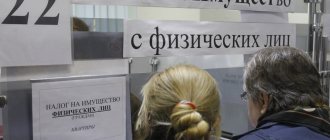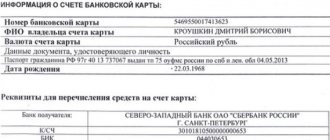Who pays property tax
Property tax is mandatory for all property owners.
This is a regional contribution, therefore the final rate of property tax for organizations is regulated by the authorities of the constituent entities of the Russian Federation (clause 1 of Article 372 of the Tax Code of the Russian Federation). Regional legislators determine not only tariffs, but also the timing of payment. Users of special taxation regimes (USN, UTII, Unified Agricultural Tax) pay contributions on property assessed at cadastral value. Organizations on OSNO transfer fees from all property taxable objects. There are those who do not pay property taxes. These are representatives of UEFA (European Football Association) and its subsidiaries; the grace period for them is limited to 12/31/2020. Confederations and national football associations are exempt from contributions for the entire period of preparation and holding of the Russian part of the European Football Championship.
Benefit for movable property
Subjects of the Russian Federation may establish a benefit for movable property, from the date of issue of which no more than 3 years have passed (clause 2 of Article 381.1 of the Tax Code of the Russian Federation).
For example, movable property is exempt from taxation if no more than 3 years have passed since the date of its release in St. Petersburg (clause 24, paragraph 1, article 4-1 of the Law of November 26, 2003 N 684-96). The main condition for the application of the benefit is that the average monthly salary of the payroll employees of the organization and its separate divisions located in St. Petersburg, in the tax period in which the benefit is used, exceeds three times the minimum wage in St. Petersburg, valid during the specified tax period (clause 4 of article 4-1 of the Law of November 26, 2003 N 684-96).
Be sure to check your regional law to find out the conditions for providing these benefits!
According to the Decision of the EAEC Council dated July 16, 2012 N 54 “On approval of the unified Commodity Nomenclature for Foreign Economic Activity of the EAEU and the Unified Customs Tariff of the EAEU”, if the date is not indicated or contradictory data are indicated, then it should be assumed that more than 3 years have passed since the release of the equipment .
To determine the date of manufacture, you should be guided by the data of technical (factory) passports, labels, product stickers, catalogs, and other documents, as well as the results of an independent examination (Letter of the Ministry of Finance dated September 25, 2018 N 03-05-05-01/68585).
If the issue date is not fully indicated in the documents for movable property, the Ministry of Finance proposes to consider the following as the issue date (Letter of the Ministry of Finance of the Russian Federation dated September 25, 2018 N 03-05-05-01/68585):
- if the month and year are specified – the 15th day of the specified month;
- if a year is specified - July 1 of the specified year;
- if the property was acquired before July 1 - the date of acquisition of the property.
What property should I pay for?
From 2022, taxpayers do not pay taxes on movable property. In 2022, the current corporate property tax rate is established only for real estate assets. Taxable objects include real estate registered on the balance sheet of an institution as a fixed asset (clauses 1, 2 of Article 375 of the Tax Code of the Russian Federation).
The contribution is also transferred for objects recorded in account 03 “Profitable investments in material assets.” These include real estate leased or leased. Residential houses, buildings and premises that are not registered on the balance sheet, but assessed at cadastral value by regional authorities, are subject to tax.
Here is what is not subject to taxation:
- plots of land;
- environmental management facilities;
- real estate of cultural value;
- nuclear installations used for scientific purposes, ships with such installations and ships registered in the International and Russian Registers of Ships, aircraft, icebreakers;
- space objects.
How to apply corporate property tax on movable property
Let us recall that the property tax of organizations is regional and these changes to the Tax Code of the Russian Federation entailed corresponding changes in a number of laws of the constituent entity of the Russian Federation, which regulate the collection of this tax on the territory of a specific constituent entity of the Russian Federation. The article provides an analysis of the procedure for applying the benefits provided for in paragraph 25 of Art. 381 of the Tax Code of the Russian Federation, and special attention is paid to controversial issues related to the application of this rule of law in practice by various subjects of tax legal relations.
Within the framework of this article, the author provides a comprehensive and systematic analysis of the norms of the Tax Code of the Russian Federation, taking into account the latest changes and amendments, regional legislation on taxes and fees using the example of the federal city of Moscow and some other constituent entities of the Russian Federation, as well as the position of official bodies - the Ministry of Finance of Russia and the Federal Tax Service of Russia .
So, in accordance with paragraph 1 of Art. 372 of the Tax Code of the Russian Federation, the property tax of organizations is established by the Tax Code of the Russian Federation and the laws of the constituent entities of the Russian Federation, is put into effect in accordance with the Tax Code of the Russian Federation by the laws of the constituent entities of the Russian Federation, and from the moment of entry into force is obligatory for payment in the territory of the corresponding constituent entity of the Russian Federation.
In particular, on the territory of Moscow, the collection of the analyzed tax is carried out in accordance with the Moscow Law of November 5, 2003 No. 64 “On the property tax of organizations.”
Let us note that from 2022, the procedure for taxation of movable property of organizations registered as a fixed asset since January 1, 2013 has changed. So, by virtue of paragraph 25 of Art. 381 of the Tax Code of the Russian Federation are exempt from taxation by the property tax of organizations - in relation to movable property registered as fixed assets from January 1, 2013, with the exception of the following objects of movable property registered as a result of: reorganization or liquidation of legal entities; transfer, including acquisition, of property between persons recognized in accordance with the provisions of paragraph 2 of Art. 105.1 of the Tax Code of the Russian Federation are interdependent.
The provisions of Art. 381.1 Tax Code of the Russian Federation. Clauses 1 and 2 of this article of the Tax Code of the Russian Federation regulate that from January 1, 2018, the tax benefits specified in clauses 21, 24 (in terms of property located in the Russian part (Russian sector) of the Caspian Sea bottom) and clause 25 of Art. 381 of the Tax Code of the Russian Federation are applied on the territory of a constituent entity of the Russian Federation if the corresponding law of the constituent entity of the Russian Federation is adopted.
At the same time, the law of the subject of the Russian Federation in relation to the property specified in paragraph 25 of Art. 381 of the Tax Code of the Russian Federation, from the date of issue of which no more than 3 years have passed, as well as property classified by the law of a constituent entity of the Russian Federation as innovative high-performance equipment, additional tax benefits may be established up to the complete exemption of such property from taxation.
Now organizations are exempt from paying tax on movable property if a law has been adopted in the region that established such a benefit. For example, in the Leningrad region, organizations do not pay tax on movable property, the date of issue of which has passed no more than 3 years.
According to paragraph 3.3 of Art. 380 of the Tax Code of the Russian Federation, if movable property is not exempt from taxation, tax rates determined by the laws of the constituent entities of the Russian Federation cannot exceed 1.1% in 2022. In particular, in the Penza region this rate is 0.55%.
The Letter of the Ministry of Finance of Russia dated April 27, 2018 No. 03–05–06–04/28685 also draws special attention to taxpayers that clause 3.3 of Art. 380 of the Tax Code of the Russian Federation provides that tax rates determined by the laws of the constituent entities of the Russian Federation in relation to the property specified in paragraph 25 of Art. 381 of the Tax Code of the Russian Federation, not exempt from taxation by the law of the constituent entity of the Russian Federation in accordance with Art. 381.1 of the Tax Code of the Russian Federation, cannot exceed 1.1% in 2022, and from 2022 2.2%.
Thus, if the decision to establish a tax benefit for the property tax of organizations from 2022, provided for in paragraph 25 of Art. 381 of the Tax Code of the Russian Federation, not accepted in the constituent entities of the Russian Federation, in 2022 a tax rate of no higher than 1.1% is applied to the specified movable property.
Amendments to the above procedure for taxation of movable property are currently not being considered by the Russian Ministry of Finance.
At the same time, it is reported that in accordance with the legal position expressed by the Constitutional Court of the Russian Federation (Determination No. 451-O dated December 14, 2015), the assessment of the provisions of paragraph 1 of Art. 374 of the Tax Code of the Russian Federation in conjunction with Articles 17, 19, 38, 53 and 358 of the Tax Code of the Russian Federation allows us to conclude that the corporate property tax and transport tax have independent objects of taxation and independent tax bases and, therefore, cannot be considered as allowing double taxation of one and the same economic object, and therefore - as violating the principles of fair and proportionate taxation arising from Art. 1 (part 1), 55 (part 3) and 57 of the Constitution of the Russian Federation.
Regional authorities have the right to completely reset tax rates on movable property, including for the creation of innovative equipment or re-equipment of production. For example, in the Kaluga region, for a number of newly created fixed assets within the framework of the regional program for the renewal and modernization of enterprises, the tax rate is set at 0%.
If a subject of the Russian Federation for 2022 has not decided to apply the federal tax benefit on movable property and has not reduced tax rates, then such property is taxed at a marginal rate of 1.1%.
In 2022, in Moscow, the benefit for movable property registered after January 1, 2013 has been preserved, which follows from clause 31, part 1, art. 4 of Moscow Law No. 64. When calculating advance payments, it must be reflected according to the new rules. However, it should be taken into account that the provisions of clause 31, part 1, art. 4 of Moscow Law No. 64 lose force from January 1, 2019 (Article 2 of Moscow Law No. 4 of February 21, 2018 “On amendments to Article 4 of Moscow Law No. 64 of November 5, 2003 On corporate property tax ").
For reference: for example, in the Nizhny Novgorod region, the tax benefit under consideration for an organization’s property tax will be valid in 2018–2020, subject to the following conditions (clause 22, clause 23, part 1, article 2.1 of the Law of November 27, 2003 No. 109-Z). However, this region has established its own requirements for organizations, subject to which they are entitled to this benefit. These requirements are as follows.
Firstly, the organization must conduct activities specified in section C and (or) class 72 OKVED 2, or is engaged in the transportation of beneficiaries, pupils and students on regular routes in the region.
Secondly, the property was registered no earlier than 2016 (not 2013, as before).
Important.
The Federal Tax Service of Russia gave recommendations on certain issues of filling out tax reporting forms for the property tax of organizations dated March 14, 2018 No. BS-4–21/4786.
The Federal Tax Service of Russia reports that from January 1, 2018, the tax benefits specified in paragraphs 21, 24 (regarding property located in the Russian part (Russian sector) of the Caspian Sea bottom) and paragraph 25 of Art. 381 of the Tax Code of the Russian Federation are applied on the territory of a constituent entity of the Russian Federation if the corresponding law of the constituent entity of the Russian Federation is adopted.
According to paragraphs. 5 clause 5.3 of the Procedure for filling out the declaration (Order of the Federal Tax Service of Russia dated March 31, 2017 No. ММВ-7–21/ [email protected] “On approval of forms and formats for submitting a tax return for the property tax of organizations and tax calculation for an advance payment for property tax organizations in electronic form and procedures for filling them out"), a composite indicator is indicated on line with code 160: in the first part of the indicator, the tax benefit code is indicated in accordance with Appendix No. 6 to the Procedure.
The second part of the indicator on the line with code 160 of Section 2 is filled in only if the first part of the indicator indicates the tax benefit code 2012000 (tax benefits established by the laws of the constituent entities of the Russian Federation, with the exception of tax benefits in the form of a reduction in the rate for a certain category of taxpayers and in the form of a reduction in the amount of tax payable to the budget).
In the second part of the indicator, the number, paragraph and subparagraph of the article of the law of the constituent entity of the Russian Federation are sequentially indicated, in accordance with which the corresponding tax benefit is provided (for each of the indicated positions, four spaces are allocated, while filling out this part of the indicator is carried out from left to right, and if the corresponding detail has less than four characters, empty spaces to the left of the value are filled with zeros).
Thus, if in a constituent entity of the Russian Federation in 2018 the benefit under clause 25 of Art. 381 of the Tax Code of the Russian Federation, then when declaring the right to this benefit, the organization in the line with code 160 of Section 2 of the Declaration must indicate a composite indicator, the first part of which is 2012000, and the second is the details of a specific law in the format specified in paragraphs. 5 clause 5.3 of the Procedure.
In a similar manner, the indicator of the line with code 160 of Section 2 of the Declaration is filled in if benefits under clause 21 and (or) 24 of Art. 381 of the Tax Code of the Russian Federation in the manner prescribed by Art. 381.1 Tax Code of the Russian Federation.
In conclusion, I would like to draw attention to another interesting issue related to the application of the benefits of clause 25 of Art. 381 of the Tax Code of the Russian Federation, namely, on the application of corporate property tax benefits in relation to movable property registered by the lessor after January 1, 2013.
Thus, the Letter of the Ministry of Finance of Russia dated April 20, 2018 No. 03–05–05–01/26893 states that, according to Art. 4 of the Federal Law of October 29, 1998 No. 164-FZ “On financial lease (leasing)” (hereinafter referred to as Federal Law No. 164-FZ), the subjects of leasing are the lessor, the lessee and the seller. The seller, in accordance with the purchase and sale agreement with the lessor, sells the property that is the subject of leasing to the lessor within a specified period. The seller is obliged to transfer the leased item to the lessor or lessee in accordance with the terms of the purchase and sale agreement. The seller can simultaneously act as a lessee within the same leasing legal relationship.
Art. 11 and 19 of Federal Law No. 164-FZ it is established that the leased asset transferred for temporary possession and use to the lessee is the property of the lessor, unless otherwise provided by the leasing agreement.
In accordance with paragraph 25 of Art. 381 of the Tax Code of the Russian Federation are exempt from taxation from January 1, 2015, organizations - in relation to movable property registered as fixed assets from January 1, 2013, with the exception of movable property items registered as a result of reorganization or liquidation of legal entities or transfer, including acquisition , property between persons recognized in accordance with the provisions of paragraph 2 of Art. 105.1 of the Tax Code of the Russian Federation are interdependent.
According to clause 2 of the Instructions on the reflection in accounting of transactions under a leasing agreement, approved by order of the Ministry of Finance of Russia dated February 17, 1997 No. 15, the conditions for placing leased property on the balance sheet of the lessor or lessee are determined by agreement between the parties to the leasing agreement.
Taking into account the above, the financial department comes to the conclusion that if the lessor, who is the balance holder of the leased property, is not interdependent in relation to the seller, then the balance holder, regardless of the status of the lessee (dependent or independent person from third parties), has the right to apply the tax benefit provided for in paragraph. 25 Art. 381 Tax Code of the Russian Federation.
The Letter of the Ministry of Finance of Russia dated January 30, 2018 No. 03–05–05–01/4968 contains clarifications on another interesting issue - the application of corporate property tax benefits in relation to movable property received by an institution from the commercial organization that created it. The Russian Ministry of Finance informs that Art. 123.21 of the Civil Code of the Russian Federation provides that an institution is a unitary non-profit organization created by the owner to carry out managerial, socio-cultural or other functions of a non-profit nature.
The founder is the owner of the property of the institution he created. For property assigned by the owner to the institution and acquired by the institution for other reasons, it acquires the right of operational management in accordance with the Civil Code.
According to paragraph 2 of Art. 105.1 of the Tax Code of the Russian Federation, taking into account the provisions of clause 1 of this article, for the purposes of the Tax Code of the Russian Federation, organizations are recognized as interdependent persons if one organization directly and (or) indirectly participates in another organization and the share of such participation is more than 25% (clause 1 of this clause) ; an organization and a person who has the authority to appoint (elect) the sole executive body of this organization or to appoint (elect) at least 50% of the composition of the collegial executive body or board of directors (supervisory board) of this organization (clause 4 of this paragraph).
Taking into account the totality of the norms of the Civil Code of the Russian Federation and the Tax Code of the Russian Federation, the institution and the commercial organization that created it are recognized as interdependent persons on the grounds provided for in paragraph 2 of Art. 105.1 Tax Code of the Russian Federation.
Consequently, as the financial department indicates, in the event that a non-profit institution receives movable property from the commercial organization that created it under the right of operational management, the tax benefit provided for in paragraph 25 of Art. 381 of the Tax Code of the Russian Federation, does not apply.
Thus, the authority to establish a tax benefit for the property tax of organizations, provided for in paragraph 25 of Art. 381 of the Tax Code of the Russian Federation, from January 1, 2018, were transferred to the constituent entities of the Russian Federation, which follows from the literal interpretation of the provisions of Art. 381.1 Tax Code of the Russian Federation. If the decision to establish the specified tax benefit for the property tax of organizations from 2022 is not made in the relevant constituent entity of the Russian Federation, the organization has the right in 2022 to apply a tax rate of 1.1% (clause 3.3 of Article 380 of the Tax Code of the Russian Federation) in relation to property , specified in paragraph 25 of Art. 381 Tax Code of the Russian Federation.
We would like to remind you that in Moscow, the corporate property tax benefit has been preserved only until January 1, 2022.
Property tax rates in 2022
Tariffs for citizens and organizations are determined by local authorities. The main regulatory document that legislators are required to rely on is the Tax Code of the Russian Federation (Article 380 of the Tax Code of the Russian Federation). In 2022, the marginal corporate property tax rate is 2.2%. This means that constituent entities of the Russian Federation do not have the right to set the contribution amount higher than the maximum value. For objects taxed at cadastral value, this limit is 2%.
For some taxpayers, differentiated rates and preferential programs apply. There are also zero rates - for main gas pipelines and related structures, gas production facilities, helium production and storage (valid only for the Amur and Irkutsk regions, Yakutia) and other real estate. All this is decided by the authorities of the constituent entities of the Russian Federation. If your region does not have a resolution on property tariffs, the rates set out in the Tax Code of the Russian Federation are applied.
According to the Tax Code, the maximum corporate property tax rate is 2.2%. Let's present the main tariffs for organizations in the table.
| Rate | Object of taxation |
| 2,2% | General categories of real estate taxed at average annual value |
| 2% | Real estate taxed at cadastral value |
| 1,6% | Public railway tracks and structures that are their integral technological part |
| 0% | Part 3.1 art. 380 Tax Code of the Russian Federation:
|
Current rates of property tax for individuals (Article 406 of the Tax Code of the Russian Federation).
| Cadastral value | Inventory value |
| 0.1% - for residential real estate, unfinished construction, real estate complexes with residential assets (at least one house), garages, parking spaces, outbuildings with an area of no more than 50 square meters | Up to 0.1% - cost up to RUB 300,000. |
| 2% - the value of the fund exceeds 300 million rubles, the asset belongs to the list from clause 7 of Art. 378.2 Tax Code of the Russian Federation | From 0.1% to 0.3% - asset valuation from 300,000 to 500,000 rubles. |
| 0.5% - for all other objects | From 0.3 to 2% - cost indicator from 500,000 rubles. |
New list for the gas industry
Decree of the Government of the Russian Federation dated November 22, 2022 No. 2595-r introduced a new list of real estate necessary for the operation of main gas pipelines, gas production facilities, helium production and storage, etc.
A zero tax rate is applied to this property on the basis of clause 1 of Art. 380 Tax Code of the Russian Federation. The list from 2022 includes 125 positions according to the All-Russian Classifier of Fixed Assets OK 013-2014 (SNS 2008) (adopted and put into effect by order of Rosstandart dated December 12, 2014 No. 2018-st).
Who is eligible for benefits?
The country has federal and regional benefits. Federal are generally accepted preferences, regional are preferential programs of constituent entities of the Russian Federation. In 2022, property tax rates range from 0 to 2.2%, the tariff is determined by local legislators. They decide which benefit and which category of taxpayers to assign in the reporting period. Preferential benefits for legal entities, including budgetary organizations, are established only by regional authorities. The list of preferential categories is presented in Article 381 of the Tax Code of the Russian Federation.
Despite the fact that budgetary institutions are recognized as taxpayers of property contributions, they have the right to obtain preferential conditions for themselves.
In 2022, public sector employees receive a preference for the maximum tariff in the following categories:
- cadastral value - 2%;
- residual value - 2.2%.
Preferential programs apply to assets used in the taxpayer's main activity. Benefits are not affected by the form of ownership or level of capitalization of the company.
What movable property should be taxed in 2017
In accordance with paragraph 25 of Art. 381 of the Tax Code of the Russian Federation, movable property registered after 01/01/2013 is exempt from property tax (Clause 57, Article 1, Part 5, Article 9 of Law No. 366-FZ). This benefit does not apply to movable property accepted for accounting after:
- liquidation or reorganization of a legal entity;
- acquisition or transfer of property from related parties.
An exception to this list from 2022 is railway rolling stock produced after 01/01/2013.
To find out whether updating the constituent documents of a joint stock company affects the movable property benefit, read the material “Transformation of a JSC into a PJSC: what will happen to the property tax benefit?” .
Thus, in 2022, when calculating the average annual value of property in the tax base, one should take into account (subclause 8, clause 4, article 374, clause 25, article 381 of the Tax Code of the Russian Federation) the cost of movable property that is not included in depreciation groups 1 and 2 , but related to objects:
- registered as OS before 01/01/2013;
- registered as an OS later than 01/01/2013 after the liquidation or reorganization of a legal entity, as well as as a result of acquisition or transfer from related parties, except for railway rolling stock;
To learn about which BCCs should be used in 2017-2018 when making property tax payments, read the article “BCC for property tax in 2017-2018.”
How to calculate the tax amount
The general calculation rules are as follows: the tax base is multiplied by the tariff. If advance payment is provided in your region, then subtract all advance payments paid from the calculated fee amount.
The detailed procedure for calculating the contribution depends on the type of value of real estate assets:
- Average annual. This is the value obtained by summing the residual value on the 1st day of each month for the year. The result is calculated as follows: Tax contribution = СрС × rate (maximum 2.2%).
- Cadastral. Determined for each real estate fund as of January 1 of each year. The formula is: Property fee = KS × tariff (maximum 2%).
IMPORTANT!
Use our online calculator to calculate.
How to pay taxes and advance payments
Calculations for advance payments have been canceled since 2022. But this does not mean that taxpayers have been relieved of the obligation to make advance payments. You will have to pay the advance as in 2022 - every quarter. The advance payment for the property contribution is one-fourth of the product of the tariff and the tax base.
The need for advance payment and the timing of payment are established by regional authorities. There is no single date for the transfer of the advance payment. But the final (annual) tax must be transferred to the budget simultaneously with the submission of the declaration.
The situation is similar for citizens. The marginal property tax rate for legal entities and transfer rules are determined at the local legislative level. The payment deadlines are the same: pay the fee before December 1 of the next reporting period. If December 1 is a holiday, try to send the payment in advance or on the next business day.
Technology for calculating advances and preparing reports
First you need to collect information:
- on the cadastral value of a real estate asset on the company’s balance sheet as of 01/01/2018 (if it is included in the list under clause 1 of Article 378.2 of the Tax Code of the Russian Federation);
- on the cadastral value of residential premises not taken into account on the balance sheet as fixed assets (clause 12 of Article 378.2 of the Tax Code of the Russian Federation);
- on the residual value (according to accounting data) of the company’s other assets (to calculate the average value of assets for the 1st quarter of 2018).
- Property tax rate ─ 2.2%. The maximum tax rate on “movable property” cannot exceed 1.1% (clause 3.3 of Article 380 of the Tax Code of the Russian Federation). For Sevastopol and Crimea ─ 1%. This rate is used to calculate the tax advance on movable assets (Clause 25, Article 381 of the Tax Code of the Russian Federation):
- belonging to 3-10 depreciation groups;
- registered from 01/01/2013;
- received by the company not from related parties and not as a result of reorganization or liquidation.
IMPORTANT! The maximum rate is applied only if regional authorities have not provided reduced rates or benefits. The calculation of advances does not include the cost of property included in depreciation groups 1 or 2 (subclause 8, clause 4, article 374 of the Tax Code of the Russian Federation). The maximum property tax rate based on the cadastral value cannot exceed 2% (clause 1.1 of Article 380 of the Tax Code of the Russian Federation), but regional authorities have the opportunity to reduce it.
Having collected the information, calculate the advances separately:
- Based on the cadastral value of the property:
APk = ¼ x KSI x SNks,
where APk is an advance payment calculated from the cadastral value;
CSI ─ cadastral value of property;
SNks ─ tax rate (for real estate with a base in the form of cadastral value).
- Based on the average value of property for the reporting period:
APsr = ¼ x SSA x CHsr,
where APsr is an advance payment calculated from the average value of assets;
ACA ─ average value of assets for the quarter;
СНср ─ tax rate (for assets, the base for which is calculated in the form of their average value for the reporting period).
Now let’s try to calculate APk, APsr and the total amount of “property” obligations.
Features for individuals
The taxation procedure for citizens does not differ significantly from legal entities. There are general legislative standards and local administrative acts. There are objects of taxation and tariffs applied to them. The tax base (cadastral or inventory value of the taxable property) is charged with the contribution percentage established in the region. The final tax rate on property of individuals is determined by local governments.
Legislators plan to introduce a new calculation procedure - based on the cadastral value of the real estate fund, since the cadastral valuation of objects is as close as possible to the market value. Some regions have already begun to apply this system, for example the Ulyanovsk region (112-ZO dated September 22, 2017).
If you want to find out the current tariff for property payments, contact the territorial office of the Federal Tax Service or the website nalog.ru. The help resources list all applicable settings. The user must determine the type of contribution, payment period and indicate the registration address of the organization (for legal entities).





